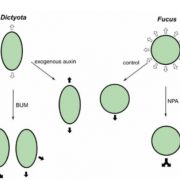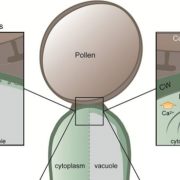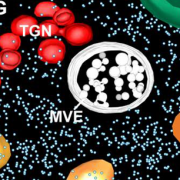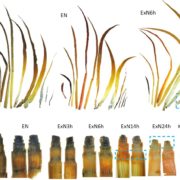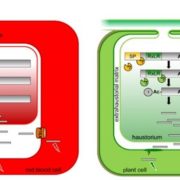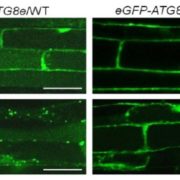A pair of papers that redefines the pyrenoid, the eukaryotic CO2-concentrating organelle
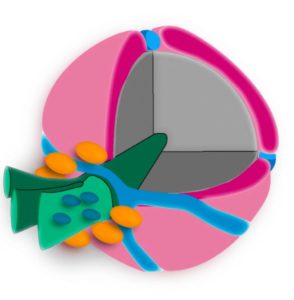 Photosynthesis in aquatic organisms is made difficult due to the low solubility of CO2 in water. Algae such as Chlamydomonas rheinhardtii overcome this limitation through a carbon-concentrating organelle called a pyrenoid. Two papers in Cell redefine our understanding of the pyrenoid structure. Mackinder et al. (10.1016/j.cell.2017.08.044) tagged pyrenoid-localized proteins and examined their locations as well as their interactions. Their study revealed new insights and additional complexity to the pyrenoid structure including the presence of at least four distinct outer protein layers, and the surprising finding of a carbonic anhydrase localized to the flagella, where it might aid in chemotaxis towards HCO3–. Using cryo-electron tomography (a method that was the subject of the Nobel Prize in Chemistry this week) and FRAP (fluorescence recovery after photobleaching), Freeman Rosenzweig et al. (10.1016/j.cell.2017.08.008) showed that rather than being crystalline-like, the Rubisco-rich pyrenoid matrix is instead liquid-like, which may better enable its sequestration into two daughter cells during cell division. Cell. (Even if you don’t have time to read the papers, check out this cool movie).
Photosynthesis in aquatic organisms is made difficult due to the low solubility of CO2 in water. Algae such as Chlamydomonas rheinhardtii overcome this limitation through a carbon-concentrating organelle called a pyrenoid. Two papers in Cell redefine our understanding of the pyrenoid structure. Mackinder et al. (10.1016/j.cell.2017.08.044) tagged pyrenoid-localized proteins and examined their locations as well as their interactions. Their study revealed new insights and additional complexity to the pyrenoid structure including the presence of at least four distinct outer protein layers, and the surprising finding of a carbonic anhydrase localized to the flagella, where it might aid in chemotaxis towards HCO3–. Using cryo-electron tomography (a method that was the subject of the Nobel Prize in Chemistry this week) and FRAP (fluorescence recovery after photobleaching), Freeman Rosenzweig et al. (10.1016/j.cell.2017.08.008) showed that rather than being crystalline-like, the Rubisco-rich pyrenoid matrix is instead liquid-like, which may better enable its sequestration into two daughter cells during cell division. Cell. (Even if you don’t have time to read the papers, check out this cool movie).


